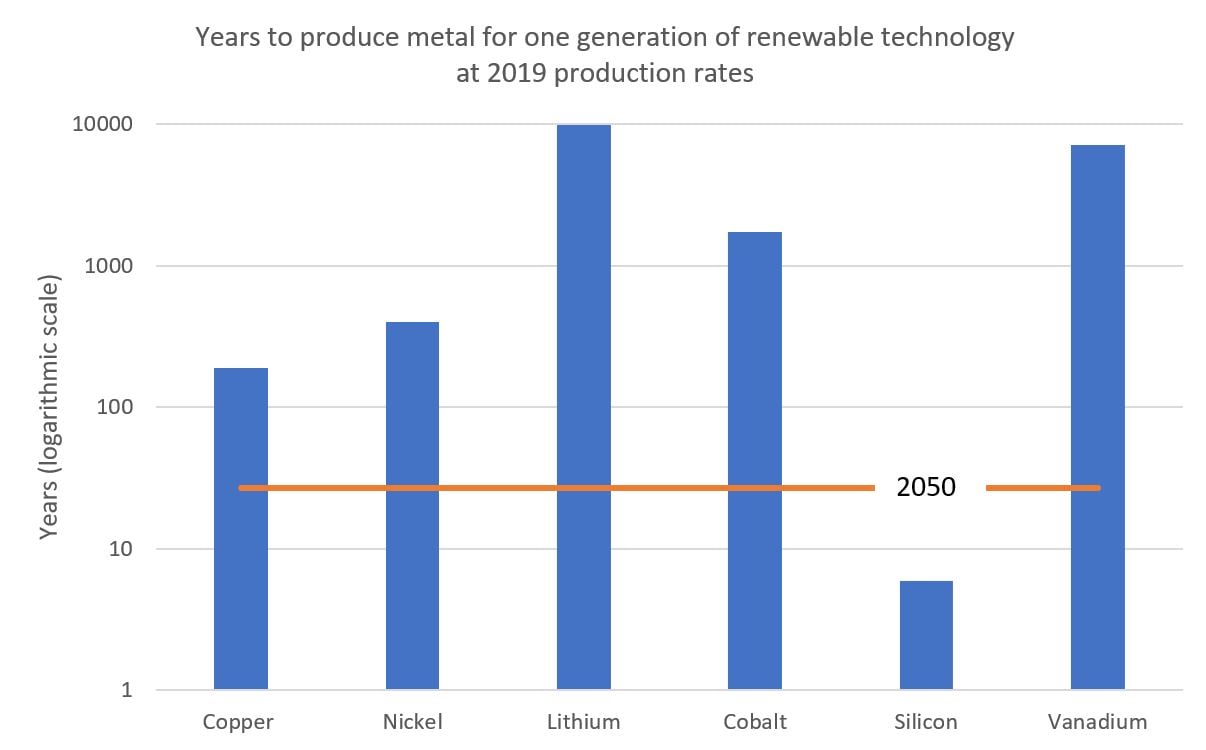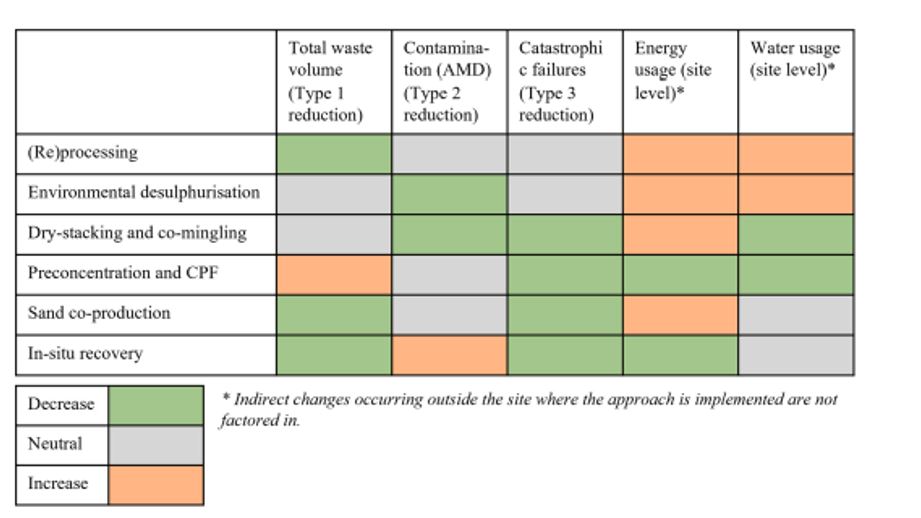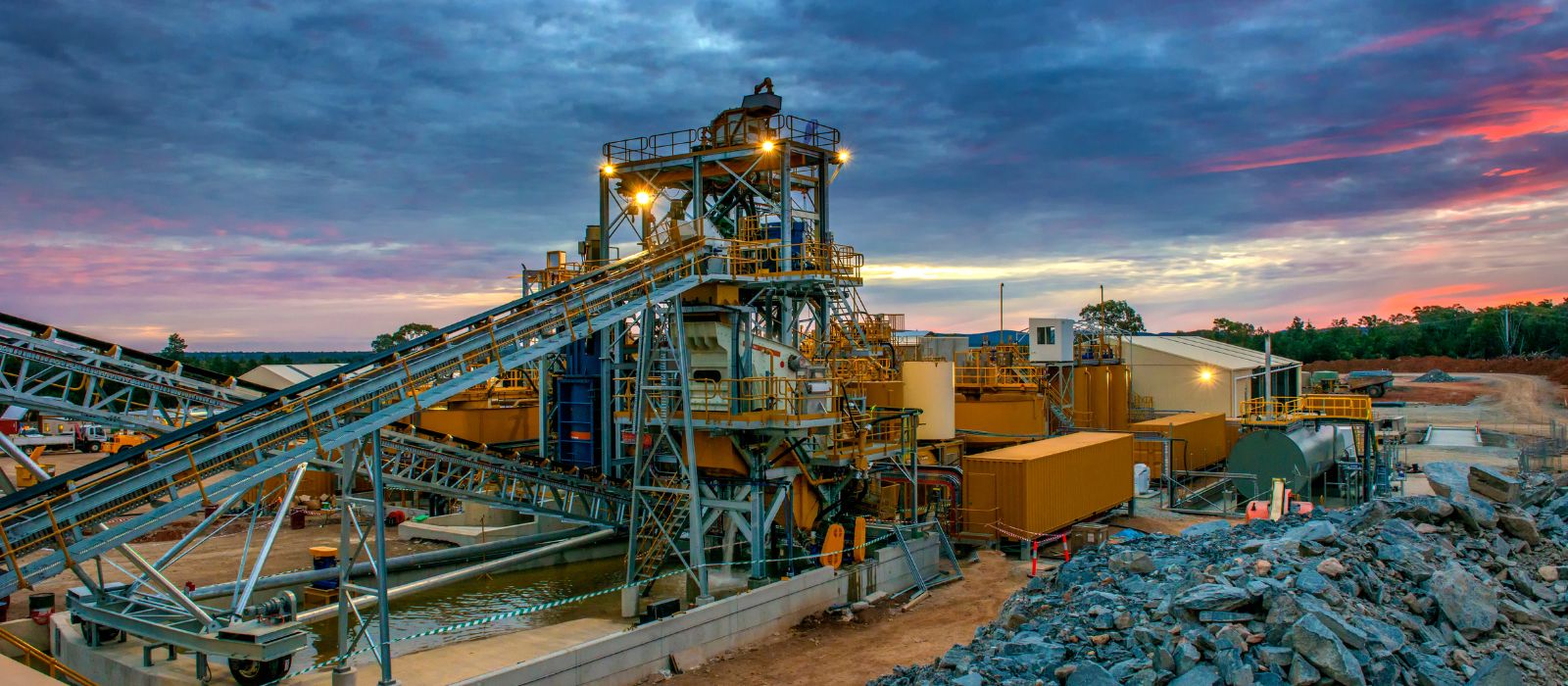Is the ‘green transition’ changing minerals processing in Australia?
What is the 'green transition'?
The green transition, also known as the transition to a low-carbon economy, refers to the shift towards cleaner and more sustainable forms of energy production. This transition is driven by the desire to reduce global greenhouse gas emissions in order to reduce the extent of climate change.
As well as driving efforts towards lower mining environmental footprints, one of the main impacts of the green transition on mining is an increased demand for minerals and metals used in renewable energy technologies, like solar panels, wind turbines and high-performance batteries. These include lithium, cobalt, nickel and rare earths, as well as copper, which is needed for the large-scale electrification and associated transmission projects.
In his work outlining the additional capacity required to replace fossil fuel-based energy, Simon Michaux (2021; 2022) has estimated that to produce one generation of renewable technology would require many multiple times global 2019 production rates of key minerals and of their current global reserves.

Figure 1. Years to produce metal for one generation of renewable technology (Michaux, 2022).
This unprecedented demand for renewable energy metals is spurring the following key trends in minerals processing.
Trend: Growing demand for ‘new economy minerals’ is challenging the availability of expertise, alongside low mining and minerals processing enrolments
Pressure from climate-focussed investors, as well as government policy changes, are slowing greenfield coal development in Australia. At the same time, mining countries with high environmental, social and governance (ESG) credentials such as Australia are being sought out by electric vehicle and battery manufacturers seeking to secure responsibly sourced supplies of critical minerals. With the risk of supply chain insecurity around these key minerals, Australian, Canadian and US governments have introduced incentives to increase critical minerals production and accelerate project timelines, both locally and in partner countries.
In Australia, for instance, the number of critical minerals major projects at the publicly announced or committed stage has increased by 40% since 2019 (Office of the Chief Economist 2019; 2022). This activity is noted especially in lithium, cobalt and rare earths. Processing of these commodities, particularly to refined final products, is complex, often requiring novel hydrometallurgical pathways and posing challenging waste management issues. Increasing local capability to deliver these projects will support Australian growth in critical minerals.
The National Skills Commission’s 2022 Skills Priority List (SPL) identifies occupations in Australia that have current and future shortages. Metallurgists are a prime example of the many mining-related occupations that are in shortage. Many engineering services providers and mining companies are finding it challenging fill these roles, and looking for solutions to expand the talent pool to provide the expertise in the timeframes required for this rapid transition. In the context of looming emissions reduction deadlines across numerous sectors, Engineers Australia in 2022 released an engineering skills recovery roadmap, highlighting the challenges in responding to the continually rising job vacancy rate (Engineers Australia, 2022).
All engineering sectors from mining, electrical, mechanical, process and environmental have had dramatic reductions in enrolments at universities across the country. Schools for mining and mineral processing courses have gone from over 12 different centres in all states in 1985 down to only 3 in 2020. (Minerals Council Australia, 2020). Changing this trend requires a significant ‘rebranding’ of mining and minerals processing as key to delivering the minerals needed for the green transition, to attract the best and brightest to the field.
Trend: Waste is becoming a resource ripe for processing
A synergy between the need for critical minerals and a focus on rehabilitation of existing and legacy mines is birthing research projects and characterisation of mine waste for economic reprocessing. The Century Mine, one of the top 20 largest zinc producing projects worldwide, is reprocessing historic tailings to recover valuable zinc (SNL Commodity Profile, 2023).
This year, another Queensland project, aimed at reprocessing gold tailings at the historic Mt Morgan site, received a $66 million loan via the Northern Australia Infrastructure Facility (NAIF). This recovery of gold from waste stream is possible by using a resin-bead absorbent technology to support cyanide recycling (Heritage Minerals, 2023).
In another development in 2022, Geoscience Australia teamed up with the University of Queensland (UQ), RMIT University and the Geological Survey of Queensland to develop an Atlas of Australian Mine Waste, highlighting new opportunities for recovering valuable minerals, a concept known as secondary prospectivity (Geoscience Australia, 2022). With over 20 papers published on the topic, researchers at the Sustainable Minerals Institute have been focussed on waste characterisation of many mines across Queensland and Tasmania, states that both have long, illustrious mining histories.
Presently, the Queensland Department of Resources is conducting a pilot program to release an abandoned tungsten and molybdenum mine site for re-commercialisation. With the goal of creating value from mine-impacted land for local communities and ecosystems, a multistakeholder workshop was facilitated in February this year by enviroMETS and CRC Time to identify and assess innovative and sustainable repurposing, re-commercialising, and remediation solutions.
All this activity points to a mindset shift in the way the industry views mining waste and opens up opportunities for retreatment. Success calls for existing and new approaches, as economic reprocessing is highly dependent on the ore characteristics and the location factors of each asset.
Trend: Increasing iron ore beneficiation in a bid for ‘greener’ steel
An insufficient supply of iron ore of grade high enough for use in hydrogen-based direct reduced iron (DRI) processes is a challenge for a measurable shift towards use of this zero-emissions process. To address this issue, a move towards increased mining and processing of magnetite containing ores may help, as these are more likely to result in the high grades required through enhanced liberation and magnetic processing as well as being easier to agglomerate (pelletise) prior to the direct reduction process.
Another option is enhanced beneficiation of hematite ores, even if resulting in slightly lower blast furnace suitable grades than the DRI-grades possible from hematite ores. The Heavy Industry Low-carbon Transition (HILT) Cooperative Research Centre currently has such a research program to accelerate carbon footprint reduction by the production of greener iron products from Pilbara ores in Western Australia.
This sector decarbonisation trend will likely see increased demand for higher grade iron ore inputs to the steelmaking process, processed from magnetite and hematite ores.
Trend: Reduction, management and circular economy solutions for tailings
Total global waste rock and tailings projected production over 2020-2050 was modelled by the team at the UQ Sustainable Minerals Institute (SMI) to be approximately 2,000 Gt, with associated tailing storage costs estimated at USD $1.6 trillion (Valenta et al, 2023). These mind-boggling figures create a more urgent, and commercially driven, need for developing solutions to reduce volumes, de-risk storage, and re-purpose tailings. Concurrently, tightening financial provisioning arrangements for end of mine life rehabilitation in many jurisdictions is sharpening the focus on early and progressive closure planning.
Solutions under consideration at existing operating sites, and for greenfield projects in development, include reprocessing, environmental desulphurisation, dry-stacking and co-mingling, preconcentration and coarse particle flotation, ore sand co-production, and in-situ recovery. The applicability of each of these approaches is ore and mine location dependent. The table below summarises the potential benefits and impacts as summarised by the SMI team.

Figure 2. Summary of main advantages and disadvantages for the six alternative approaches compared to conventional methods (Valenta et al, 2023).
Investigation at early feasibility stages of all potential tailings and mine waste reduction and management options, including processing solutions, is critical to mitigate the impact of tailings production as demand for minerals increases.
Trend: Focus on reducing energy demand
Many mining companies have ambitious 2030 emissions reduction goals, with increased electrification being a key focus, as are opportunities to reduce peak demand to mitigate the cost of energy.
It is well understood that comminution machines (grinding / milling) are the largest single equipment contributing to a mine’s overall power consumption. A number of novel technologies are emerging into the market aiming to address comminution energy intensity. Some of these technologies are mature and established within the market, for example high pressure grinding rolls (HPGR) and vertical roller mills (VRM), which are sometimes capable of up to 30% reduction in comminution specific energy for given duties.
Initial results from other novel comminution devices currently at a smaller scale suggest significant reductions in comminution energy. As the pressure to reduce emissions increases while technology simultaneously matures, processing plant designs adopting novel lower specific energy comminution devices are likely to feature more frequently.
With high energy costs and an increased risk of intermittent supply based on high renewables penetration, mines and processing facilities designed to operate discontinuously could be part of the solution. In 2022, an OZ Minerals “Think and Act Differently” innovation challenge white paper was published on “Scalable and Adaptable Mining” (OZ Minerals, 2022). It included simulations of various scalable mine configurations in a fully electric solar and battery powered small resource scenario. The authors found that beyond a nominal battery storage capacity of four hours, the model indicated that discontinuous operation may provide a better solution to variable energy supply than having additional storage capacity. This indicates that minerals processing plant design for discontinuous operation may become attractive when a number of factors are weighted. Options include novel comminution solutions as well as processing solutions such as alternate flotation configurations.
Trend: Innovation focus on lower-impact reagents
There is currently extensive research aimed at seeking and developing eco-friendly substitutes for cyanide and other leaching agents or catalysts that aid kinetics. Proprietary solutions targeting specific ore types are being developed and some are already in initial deployment phases (e.g. Jetti, EnviroGold, Nuton, GreenGold). As these technologies become proven, we are likely to see rapid adoption due to their applicability to tailings and waste reprocessing and potential to reduce environmental impacts.
Trend: Cross value chain collaboration
Now, and in the future, the challenges to deliver zero-emissions mines and more responsible mining and processing solutions are bigger than individual mine owners or suppliers. Solutions to these pressing issues will likely come from effective collaboration between mine owners, research bodies, government, and mining equipment, technology and services (METS) companies, as well as technology providers from other industries.
Good examples where this kind of collaboration is occurring include crowd source innovation for common challenges in mining, such as the ‘Charge On Innovation Challenge’ supported by BHP, Rio Tinto and Vale and OZ Minerals ‘Think and Act Differently’ programs, as well as within industry groups such as the International Copper Association Australia and their development of papers on ‘Zero Emission Copper Mine of the Future’.
Similar to the improvements around safety in the industry over the last couple of decades resulting from collaboration and prioritisation, greater collaboration around shared technical and operational problems is certainly needed and is likely to continue.
“May you live in interesting times”
is an often-quoted phrase. Now is certainly a very interesting time to be involved in the mining and minerals processing sector, and there are so many opportunities for talented industry professionals to contribute and shine in support of the green transition.
If you are interested to have conversations on these topics, please contact the author.
References and further reading
BHP, 2021. Charge On Innovation Challenge Global competition launched to electrify mine truck fleets [online]. Available from: https://www.bhp.com/news/media-centre/releases/2021/05/charge-on-innovation-challenge-global-competition-launched-to-electrify-mine-truck-fleets
Casey J, 2021. EnviroGold to reprocess Hellyer Gold Mine tailings, Global Mine Review [online].Available from: https://www.globalminingreview.com/environment-sustainability/30112021/envirogold-to-reprocess-hellyer-gold-mine-tailings/
Engineers Australia, 2022. 'Engineers Australia Addresses Skills Crisis With New Engineering Recovery Roadmap' [online]. Available from: https://www.engineersaustralia.org.au/news-and-media/2022/08/engineers-australia-addresses-skills-crisis-new-engineering-recovery-roadmap
Geoscience Australia, 2022. 'Atlas of Australian Mine Waste puts secondary prospectivity on the map' [online]. Available from: https://www.ga.gov.au/news-events/news/latest-news/atlas-of-australian-mine-waste-puts-secondary-prospectivity-on-the-map
Heritage Minerals, 2023. 'Technology' [online]. Available from: https://heritageminerals.com.au/technology/
HILT CRC, 2023. 'Research Programs' [online]. Available from: https://hiltcrc.com.au/research-programs/
Institute for Energy Economics and Financial Analysis, 2022. 'Iron ore quality a potential headwind to green steelmaking – Technology and mining options are available to hit net-zero steel targets' [online]. Available from: https://ieefa.org/resources/iron-ore-quality-potential-headwind-green-steelmaking-technology-and-mining-options-are
Jetti, 2023. First Chilean Deployment of Jetti’s Novel Leaching Technology at El Abra Copper Mine, Majority-Owned and Operated by Freeport-McMoRan Inc [online]. Available from: https://www.jettiresources.com/news-reports/press-releases/first-chilean-deployment-jettis-novel-leaching-technology-el-abra-copper-mine-majority-owned-and-operated-freeport-mcmoran-inc/
Michaux Simon P, 2021. "Assessment of the Extra Capacity Required of Alternative Energy Electrical Power Systems to Completely Replace Fossil Fuels", Geological Survey of Finland.
Michaux Simon P, 2022. SMI Webinar, “Assessment of the Extra Capacity Required of Alternative Energy Electrical Power Systems to Completely Replace Fossil Fuels”, 19 August.
Office of the Chief Economist, 2019 and 2022. “Resources and Energy Major Projects”.
OZ Minerals, 2022. "Scalable and Adaptable Mining – Reimagine mining through modular architecture and flexibility" OZ Minerals Think and Act Differently Innovation Challenge White Paper.
Queensland Government Department of Resources, 2023. 'Re-commercialisation of abandoned mines' [online]. Available from: https://www.resources.qld.gov.au/mining-exploration/initiatives/re-commercialisation-of-abandoned-mines
Rockhampton Regional Council, 2023. 'Mount Morgan’s Eureka Moment' [online]. Available from: https://www.rockhamptonregion.qld.gov.au/AboutCouncil/News-and-announcements/Latest-News/Mount-Morgan%E2%80%99s-Eureka-Moment
SNL, 2023. Zinc Commodity Profile, retrieved 2/3/2023.
Valenta et al, 2023. “Decarbonisation to drive dramatic increase in mining waste–Options for reduction”, Resources, Conservation and Recycling 190, 106859.
